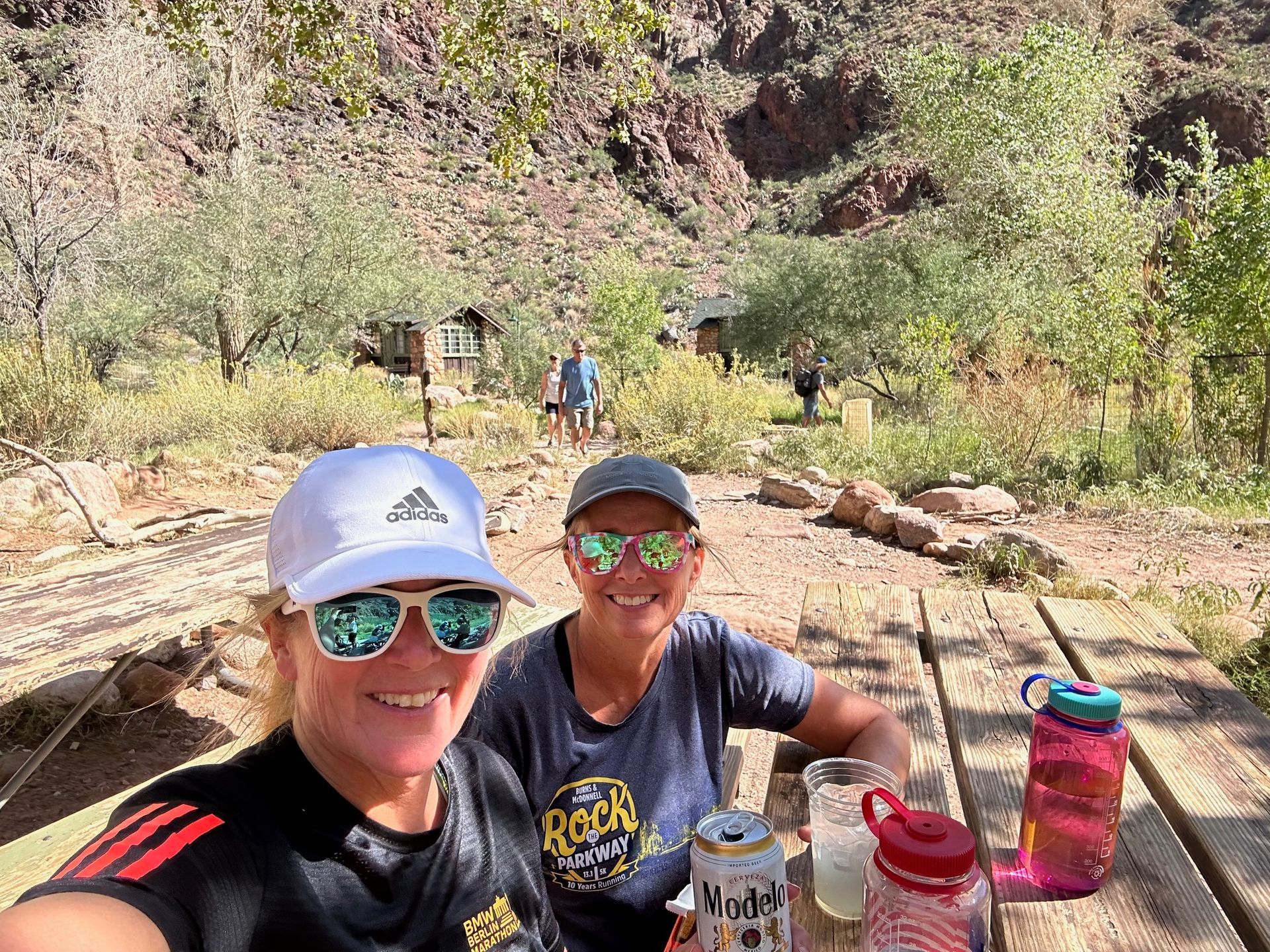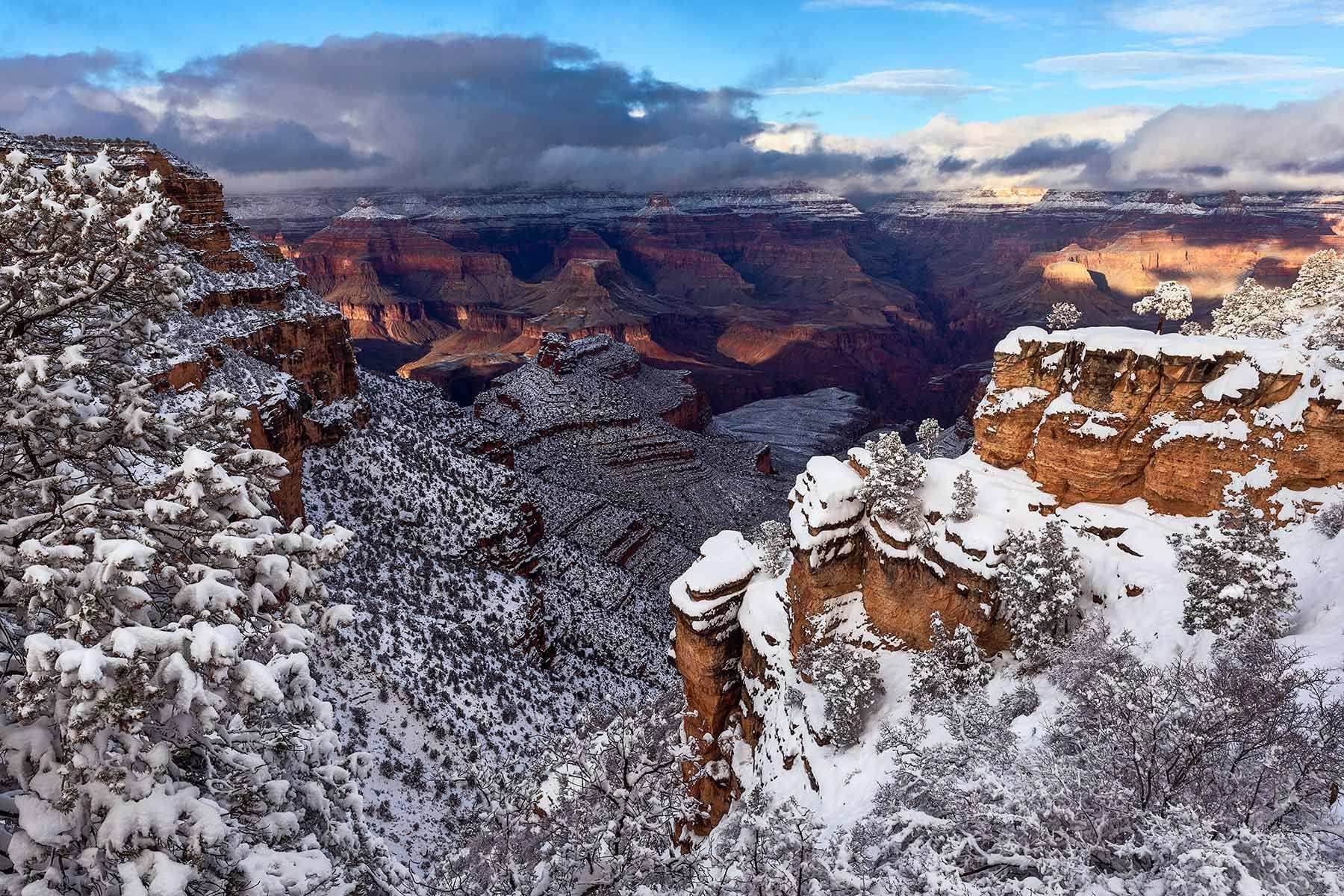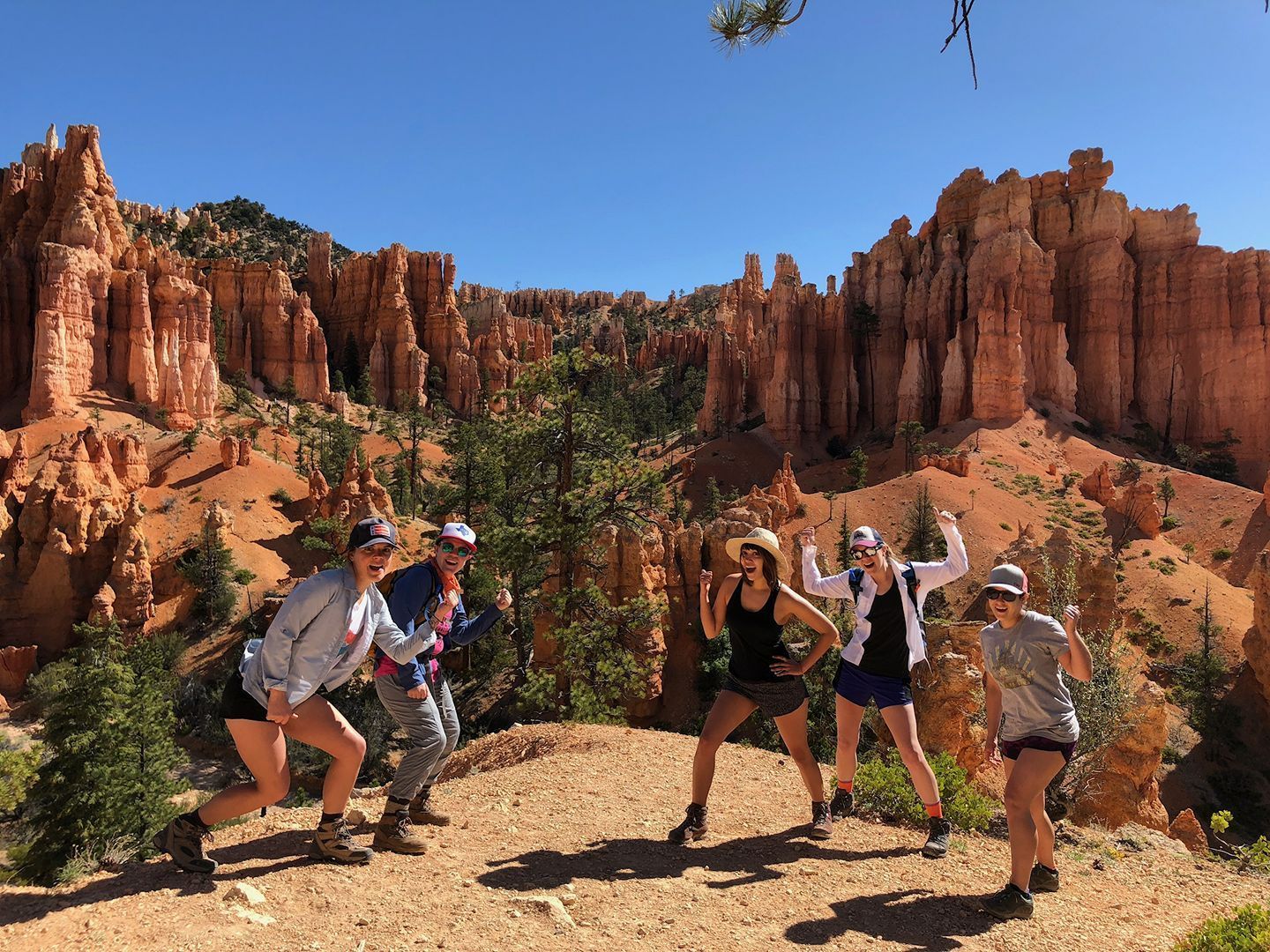Hydration Before, During and After Hiking
Key Takeaways
- Hydrate before you hike: Begin drinking plenty of fluids a few days in advance—“camel up” before the trail to prime your body, regulate temperature, and improve endurance.
- Adjust hydration for elevation: The higher you go, the more water you’ll need. Staying hydrated before and during mountain hikes like the Grand Canyon helps prevent fatigue and altitude-related issues.
- Plan how to carry water: Use hydration packs, bottle holders, or filtration systems that suit your hike length and terrain to keep water accessible and manageable.
- Balance water and electrolytes: Avoid overhydration by replenishing salts with snacks or electrolyte drinks to prevent hyponatremia and maintain energy.
- Rehydrate after hiking: End each trek by drinking more water and eating nutrient-rich foods to help muscles recover and restore fluid balance.
- Listen to your body: Signs like thirst, cramps, or sluggishness signal dehydration—stay proactive and make hydration part of every hiking routine.
The body is designed to be partially fueled by fluids. For men, the need is around 3.5 liters of water or other fluids per day. This equals to 15.5 cups. Women need about one liter less per day or around 11.5 cups. If you’re backpacking, the necessary intake is always more. Hiking and water go hand in hand—neglecting hydration can lead to fatigue, cramps, and even dangerous conditions like heatstroke or hyponatremia.
Start Hydrating Before Hitting the Trail
The best thing you can do is bring water and drink quite a bit of it several days before and the morning of your hike. Some hikers call this method, ‘camel-ing up’. This simple task preps the body ahead of hike, hydrating everything from the organs to your veins.
Preparing the body with extra fluids can also help remove any unnecessary wastes, regulates body temperature, lubricates joints and protect any sensitive tissues within the body. These are all necessary things that need to occur in the midst of your hike.
If you’re not used to drinking 3 liters of water a day, begin by drinking 2 or 3 liters per day, starting a week before the hike. As you become a more avid hiker, you can learn to hydrate in larger increments prior to hiking or backpacking. Hydration is not only helpful and necessary when hiking, it’s a part of a living a healthy lifestyle as well.
What to Drink Before Long Walks
Many wonder what to drink before long walks—the best choices include plain water, electrolyte-infused drinks, and herbal teas. Avoid alcohol and caffeine in excess as they can dehydrate you.
Preparing the body with extra fluids can help remove waste, regulate body temperature, lubricate joints, and protect sensitive tissues. If you’re not used to drinking 3 liters a day, start slowly and increase your intake. Hydrating properly is key before hiking and fishing trips, high-elevation treks, or backpacking in Arizona.
Understanding Elevation Changes and Hiking
Now, if you’re planning a backpacking trip in the mountains or a day hike at higher elevation, your body will quickly feel the strains of it if not properly hydrated and the hiking water strategy changes drastically. The higher the elevation, the more water is necessary to keep your body moving. Being hydrated before reaching higher elevations can even improve the quality of your hiking in a mountain experience, keep your muscles moving more fluidly and your body won’t be straining as much. This is especially true for Grand Canyon backpacking routes where elevation shifts can challenge even seasoned hikers.
How to Carry Water Smartly
Choosing the best way to carry water backpacking is key to comfort and efficiency. Depending on your preference and route, there are several options:
- Water packs for hiking
- Water bottle holders for hiking
- Water bottle strap for walking
- Hyperlite water bottle holder
- Water bottle carriers for hiking
- Water bottle lanyard
- Water backpacking
Each has benefits—some offer hands-free use, others are ultra-light for long-distance hikes. Consider a 10 liter jug for extended desert trips or Arizona backpacking trails.
Best Way to Carry Water While Hiking
If you’re wondering how to carry water when hiking, think about accessibility. Bottles should be easy to reach and refill. Day hike hydration packs are great for dehydration safety tips like drinking small sips frequently.
Don’t Be Overconfident—Continue Water Intake
Yes, it can be frustrating to stop your hike and refill your water. It can interrupt your hiking rhythm and feel like you’re losing precious time. However, if you fail to do this and are lacking water, the pace you’ll be hiking at will be much slower overall. Know how much water to bring hiking based on the trail’s difficulty and weather.
How Much Water to Bring on a Hike
The general rule is half a liter of water per hour of moderate activity in moderate temperatures. But how much water per mile hiking also depends on elevation gain, temperature, and body size. Use a hiking water calculator to estimate. If you’re trekking desert terrain like Sedona hikes, plan extra water for heat and exposure.
If you know there is a water refill somewhere along the way, check with other hiker friends to make sure it’s stocked before your adventure. You don’t want to be halfway through a long hike and realize the water refill source is not available or reliable.
If water sources are unreliable, carry filtration tools. You’ll want to know how much water per day backpacking and how much you can realistically carry. A good strategy is how much water to carry backpacking versus how much to purify along the trail.

End the Day with More Fluids
If you’ve just finished up a hike and are back at camp or on your way home, don’t assume that you’re done hydrating. Whether it’s a short trail or one of our Grand Canyon Day Hikes, end each trek with a hydration routine. Keep some extra fluids in the car so you can drink on your ride home or immediately fill up water when you’re at camp. This is essential. After the body has worked itself, it needs water to heal muscles, tissues, and organs. Some hikers swear by a daily allowance water bottle to track intake throughout the day.
Don’t Forget Food, Especially Salty Food
When you exercise, your body sweats to help keep you cool. But along with that sweat, your body releases critical salts. If you drink a lot and fail to replenish your body’s salts, you run the risk of creating a dangerous electrolyte imbalance called hyponatremia. This is a serious medical condition that can result in debilitating cramps, comas, and, in extreme circumstances, death. But it’s a relatively easy condition to avoid as long as you stay well-nourished during your hike. Knowing how much salt per litre of water for hydration is a smart move—typically about 1/4 to 1/2 teaspoon per liter. Salty snacks such as pretzels or potato chips are perfect for maintaining proper electrolyte levels and will help keep you feeling great.
Drinks for Hiking
Best drinks for hiking include electrolyte mixes, coconut water, and broth-based drinks for salty content. Hydrating wisely prevents emergency hydration situations
At the end of the day, it’s important to be in tune with your body and listen to what it needs during a hike or backpacking adventure. If you start to feel extra thirsty or lethargic, you’re likely short on fluids. Camel-up before your hike, consume a good amount of water, along with food and electrolytes, during your hike and afterwards.
Common Hydration Questions Answered
How Much Water to Take Hiking?
Aim for about 0.5 to 1 liter per hour depending on intensity and climate. But for longer hikes, plan how much water for hike and how much water for hiking per day more precisely.
How Much Water to Take Backpacking?
For multi-day trips, plan how much water to bring backpacking and locate refill stations. Don’t forget how much water to bring camping if you’re staying overnight.
How long is a 1-hour hike?
This depends on terrain. A flat trail might be 2–3 miles, while rugged elevation can cut that in half. Factor in how long it takes to hike 20 miles if planning an all-day trek.
Can Snow Hydrate You?
Yes, but it must be melted and ideally filtered. Eating snow lowers your body temp and can dehydrate you faster. Use it only in emergencies or with proper equipment.
Stay Hydrated—Anytime, Anywhere
Even when resting, it's vital to hydrate. If you're camping or taking a break, how to stay hydrated at night includes sipping water before bed. In winter, knowing how to stay hydrated in the winter is just as critical.
Frequently Asked Questions
Staying properly hydrated before, during, and after hiking is essential for maintaining energy, preventing cramps, and avoiding heat-related illnesses. Here are some common questions and clear answers to help you stay safe and hydrated on the trail.
How much water should I drink before hiking?
Start hydrating several days before your hike. Aim for 2–3 liters of water per day leading up to it, and drink a few cups the morning of your hike. This helps your body regulate temperature, flush waste, and prepare for physical exertion.
How much water do I need while hiking?
How much water do I need while hiking?
What should I drink before and during a hike?
Stick with water, electrolyte-infused drinks, or herbal teas before and during your hike. Avoid alcohol and excessive caffeine since they can dehydrate you. Electrolyte mixes or coconut water help replace salts lost through sweat.
How can I stay hydrated at higher elevations?
At higher altitudes, your body loses fluids faster due to dry air and increased breathing rate. Drink more frequently, even if you don’t feel thirsty. Pre-hydrating before climbing and carrying extra water are key to preventing altitude fatigue.
What’s the best way to carry water while hiking?
Choose a method that suits your hiking style—hydration packs for hands-free drinking, lightweight bottles for short hikes, or larger jugs for desert treks. Accessibility is crucial; make sure your water is easy to reach and refill.
How do I know if I’m drinking enough water while hiking?
Pay attention to thirst, fatigue, and urine color. Pale yellow urine usually means you’re hydrated. Darker shades or feelings of dizziness, headache, or muscle cramps suggest dehydration—drink more water and rest.
Should I add salt or electrolytes to my water?
Yes. When you sweat, your body loses salt along with fluids. Add ¼–½ teaspoon of salt per liter of water or eat salty snacks like pretzels or nuts. This helps maintain electrolyte balance and prevents cramps or hyponatremia.
What should I do after hiking to rehydrate?
Continue drinking fluids even after finishing your hike. Water, electrolyte drinks, or broths help your body recover and repair muscles. Rehydrating post-hike reduces soreness and speeds up recovery for your next adventure.
Can I drink snow or stream water while hiking?
Only as a last resort. Snow should be melted and ideally filtered or boiled before drinking. Eating unmelted snow can lower your body temperature and worsen dehydration. Always carry or plan to purify water safely.
What are the signs of dehydration while hiking?
Early signs include dry mouth, fatigue, dark urine, dizziness, or muscle cramps. Severe dehydration may cause confusion or heatstroke. Stop, find shade, and drink fluids gradually to recover safely.
How do I avoid overhydration or hyponatremia?
Balance water with food and electrolytes. Don’t force excessive water intake without salt replacement. Eating salty snacks or using electrolyte tablets helps your body retain proper fluid balance and prevents dilution of sodium levels.
Final Thoughts: Be Ready, Be Hydrated
Use this guide to determine how much water to carry hiking and when to drink. With tools like my hydrate reminders and a 7-litre water supply on long treks, hydration becomes second nature. Whether it’s a quick nature walk or an intense expedition, always remember: be ready and be hydrated.
Planning your next adventure? Prefer comfort with adventure? Explore our Lodge-Based Hiking Tours for fully guided experiences with built-in hydration and rest stops. Check out our hiking trips for expertly planned routes and hydration support every step of the way.
From the trail to your heart—see what adventurers are saying about FS Guides. Our Google Business Profile Reviews are filled with stories of connection, challenge, and unforgettable moments.
Four Season Guides, 506 N Grant St suite o, Flagstaff, AZ 86004, United States
+19285251552
35.19653980, -111.62000560





